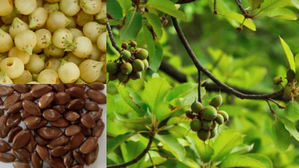New Delhi, 7 March (IANS). On hearing the name of Mahua found in the central and northern regions of India, a sweet aroma and childhood memories are refreshed. Mahua (scientific name: Madhuka Longfolia) is a tree whose flower and fruit are beneficial for health and lifestyle. This tree not only nourishes, but is also deeply connected in traditional medicine and cultural practices. It is mentioned in many traditional songs and stories.
Along with being an integral part of health and culture, this Mahua also adorns nature because when Manjari (Baur) in mangoes and kunch (bud) blooms together in mangoes, it is indicated that the arrival of spring is going to come. Mahua flowers drip from the tree overnight. Mahua’s big gardens are called “Mauhari” which are now found to be less than before.
Mahua flowers are fragrant and sweet, which contains high amounts of sugars. Because of this, when they are eaten fresh, they have a sweet taste and when dry, it becomes like dry fruit like raisins. Due to its sweetness, dishes are also made with fresh flowers of Mahua. After extracting the juice of flowers filled with these sweetness, cuisine, lapsi etc. are made by kneading dough. “Lata” is made by roasting dried flowers and grinding in okhli, which is a good source of energy. In this way, the flowers of Mahua are also eaten by fresh or dried and many dishes are made from them. In such a similar fast, dry flowers of Mahua are used to make offerings.
Mahua flowers coming from March to April are also traditionally used to feed cow-buffaloes, which increases milk production. In addition, “Mahua wine” is also made from the fermentation process using these flowers, which is popular in rural areas. Although mahua flowers and fruits are usually safe, the consumption of mahua alcohol in excess can be harmful to health.
They also have a mine of mahua flowers medicinal properties due to anti-inflammatory and antioxidant properties. These flowers can increase energy as well as provide relief in respiratory problems such as cold, cough and bronchitis. Soaking dried flowers and tying it provides relief in swelling, pain and sprain.
After the flower season is over, its fruit is the turn of “coin” on the Mahua tree. Raw fruits are peeled and boiled and eaten as vegetables. The productivity of Mahua tree is also good. The pulp of ripe fruit is sweet. The elderly women of the house separate the pulp and remove the seeds. Its part of the upper shell of the seed is very strict which is soaked. Mahua seeds contain a lot of oil with diverse uses. On the one hand, it is rich in medicinal properties, then its oil is also used to make soap, detergent etc.
Mahua seed oil is also used in the house. However, it is cooked with lemon leaf to cure its astringent taste. Once cooked, it becomes a very good option for oil refined rich in properties. Applying oil on the body removes skin dryness and works as a natural moisturizer.
In this way Mahua is not just a tree, but the gift of nature that combines health, taste and culture together. Be it the sweetness of its flowers or the medicinal properties of fruits, Mahua enriches life in every form.
-IANS
AS/
